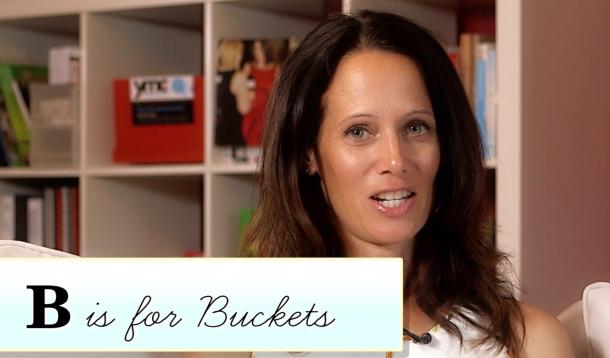
My husband, a family physician, is faced with the same question each year from many of his patients:
Should I get a flu shot?
The answer to this question may seem a bit complicated when you look at the science behind whether or not the flu vaccine is effective. But at the end of examining the data, the short answer to that question is, YES.
The confusion on the effectiveness of the flu shot comes from the guesswork used to produce the vaccine. The flu virus changes year to year and most years the flu strains in the vaccine change to match the virus strains that the World Health Organization believes will circulate during the upcoming influenza season. That’s why it’s important to get vaccinated every year. According to science writer, Julia Belluz, in 2012, researchers concluded that “most influenza vaccines have been shown to confer some protection against naturally acquired infection and no evidence for major harms has emerged.”
In the years where the vaccine strains correctly match with circulating strains, the shots are more effective than the numbers suggest.
The flu shot is safe and is the best defence against the flu which is why our family gets vaccinated. Another big reason why I get the flu shot is because my husband and I own a medical clinic and I want to do my part to protect the babies who come in who can’t get their own flu shots and seniors who are most vulnerable to flu complications. You can help protect grandpas and grandmas by getting their grandchildren covered by a flu vaccine!
We have seen some very sick children in our medical clinic. For some, the flu has led to pneumonia and hospital visits. I want to reduce the chance our children will get that sick and spread it on to other little ones. As you know, it certainly doesn’t take long for a kindergarten or pre-school aged child to spread their germs all over their schoolmates.
One year I didn’t get the shot and I happened to develop the flu that winter. It knocked me out for five days! I remember being so hot and achy I couldn’t get comfortable, but I still had to push myself to take care of my little children. There were lots of tears and pleas for help that week. While I may not be able to guarantee I won’t get the flu, I feel better knowing that I’ve done what I can to reduce the risk.
In Ontario, starting this fall, the nasal spray version of the vaccine for children and youth between two and 17 years old is available free of charge. Children in Ontario can get their nasal spray flu vaccines at their health care provider’s offices, local public health units and—those aged five years and older—at participating pharmacies. I’m sure that any parent, nurse or physician who has had to coax a little kid into getting a shot is praising this decision!
Reducing our risk of the flu also means including flu-prevention strategies in our homes.
![]() Tip: I find the best way to get our boys to wash their hands without sounding like a nag all the time is to say to them, “Everyone with clean hands is...(eating/ playing/reading etc.).” I call this parenting strategy an "everyone with tool"—it really works! Another strategy is to use when/thens like this, “When you have washed your hands, then we can eat supper.”
Tip: I find the best way to get our boys to wash their hands without sounding like a nag all the time is to say to them, “Everyone with clean hands is...(eating/ playing/reading etc.).” I call this parenting strategy an "everyone with tool"—it really works! Another strategy is to use when/thens like this, “When you have washed your hands, then we can eat supper.”
I’m so happy the cost of the nasal spray flu vaccine is now covered in Ontario for children between two and 17. I just had to coax one son through getting a needle at the dentist and the other needed stitches after splitting his forehead open. I’ll take this opportunity to give them one less needle, and one less “bravery prize.”
The nasal spray is a great option for kids who really don’t like needles. If you find that your kids are apprehensive when it comes to needles or vaccinations in general, try this strategy that I've had success with. I’m not one to condone bribery but if my kids are melting down when they need important medical help like vaccines, tooth care, stitches, or a cast, I’m not beyond offering a prize for staying brave through the tough parts. I even sometimes give myself a little extra motivation to get my shots or give blood, by promising to get a treat afterward!

Hi! Welcome to the second episode in the parenting video series: "A to Z of Taming Tantrums." Today’s episode is about the letter B, and B is for Buckets!
What are buckets?
They are metaphorical containers that represent our major needs. I find it easier to attend to my children’s needs when I picture that they have some buckets or tanks inside of them, each one representing an essential part of being.
When our children have low or empty buckets, they don’t usually have the words to explain how they are feeling to us, and use negative behaviour to do this. Our children can become quite frustrated and angry when they don’t feel attended to, loved, important, heard, or capable.
In this video, I explain what the A.L.I.V.E. buckets are and what parents can do to fill those. It's really amazing how differently people behave when the important people in their lives fill their buckets. "Bucket-filling" isn't just for our children. Our partners, co-workers, friends, and family members will respond positively to bucket filling, too.
If you would like to read more about this topic, I recommend reading this article where I explain the A.L.I.V.E tanks in more detail. Bucket or "tank" filling is one of the four cornerstones of my Connect Four Parenting, and I dedicated a whole section of my book to this topic. Please click here for more information about my eBook, Taming Tantrums: A Connect Four Parenting Approach To Raising Cooperative Toddlers.
Talking with our children about filling buckets is a wonderful way to teach them how their actions affect other people. I recommend reading the lovely book, How Full Is Your Bucket? For Kids by Tom Rath and Mary Reckmeyer with your children to get them thinking how they can fill buckets, too.

We're so excited to share with you the A to Z of Taming Tantrums video series!
Each week we'll share the next letter of the alphabet and Andrea will discuss how it relates to reducing tantrums - and improve our experience as parents! You can view each video here as they are added each Friday.


As parents, you will likely agree that taking your kids for their vaccinations can be a very stressful experience. For me, despite my stress, my guys did okay but the anticipation of shrieking cries made me sweat with fear! I own a medical clinic and have seen many babies and toddlers do just fine through their vaccinations—I had to learn how to stop psyching myself out.
Thankfully, there are several things now being done to help reduce immunization pain and make the experience more tolerable. Vaccinations are critical for child health, so properly managing pain and calming the fear and avoidance of needles is very important. The Centre for Pediatric Pain Research and the Canadian Institutes of Health Research are making sure we have evidence-based information to know how to reduce our kid's pain during immunizations.
An independent, cross-Canada team, called “Help Eliminate Pain in Kids & Adults” (HelpinKids&Adults)," led by Dr. Anna Taddio, has created guidelines for doctors and nurses on how to reduce pain during vaccinations. An updated and expanded Clinical Practice Guideline (CPG) on reducing pain during vaccinations was published this summer in the Canadian Medical Association Journal and many of these recommendations were recently also adopted by the World Health Organization.
It is important for parents to know these guidelines so they can better support their children through the vaccination appointment. The HelpinKids&Adults team put their recommendations into an easy-to-remember format for parents and healthcare professionals: The Five P’s.
Here is the low-down on how doctors and nurses will make help your child experience less fear and pain:
Parents should follow these guidelines before and during their child's immunizations to make things go smooth:

If you aren't sure about some of these suggestions, talk with your doctor or nurse in advance of the immunizations.
A bad experience with an immunization can cause fear for future vaccinations. Here are some things you can do in advance and during the appointment:
Have you seen this video? This doctor is AMAZING at administering vaccinations.
This point refers to educating parents, older children and adults about what to expect with a vaccination: how it might feel and what they can do to manage any pain.
The authors of the guidelines also recommend that school vaccinations campaigns can focus on how to make this program a more positive health care experience for children.
The 5 P's listed above are recommend to educate parents, older children and adults about what to expect with a vaccination, how it might feel and what they can do to manage any pain to help with the entire process from beginning to end. I like that this list provides many different types of suggestions so we can find ones that suit the personality of our children the best. It’s time to stock my clinic up with goofy Band-Aids, tissue, and bubbles! It doesn't have to hurt!

This is proudly sponsored by our friends at the Centre for Pediatric Pain Research.
www.itdoesnthavetohurt.ca